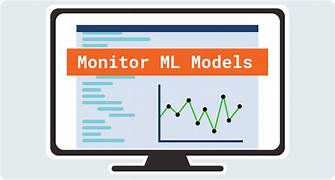Machine Learning Models for Ocean Health Monitoring
The ocean, covering over 70% of the Earth’s surface, is integral to life on our planet. It regulates climate, supports biodiversity, and sustains the livelihoods of millions. However, the health of our oceans is under threat due to pollution, overfishing, climate change, and habitat destruction. Monitoring ocean health is crucial for mitigating these challenges, yet the vastness and complexity of marine ecosystems make this task daunting. Enter machine learning (ML)—a subset of artificial intelligence that uses algorithms to analyze large datasets and uncover patterns. ML is transforming how we monitor, understand, and protect ocean health, offering powerful tools to address the pressing challenges facing our seas.
This article explores the role of machine learning in ocean health monitoring, focusing on its applications, benefits, challenges, and the road ahead.
1. Understanding Ocean Health Monitoring
Ocean health encompasses a range of factors, including:
- Water quality: Levels of pollutants, nutrients, and oxygen.
- Marine biodiversity: The presence, abundance, and health of marine species.
- Ecosystem services: The benefits oceans provide, such as carbon sequestration and food supply.
Traditional monitoring methods—such as field sampling, laboratory testing, and manual data analysis—are time-consuming, costly, and limited in scope. Machine learning addresses these limitations by enabling the processing of vast amounts of data from diverse sources, including satellite imagery, underwater sensors, and citizen science initiatives.
2. Applications of Machine Learning in Ocean Health Monitoring
a) Detecting and Predicting Ocean Pollution
Pollution, including plastic waste, oil spills, and chemical runoff, is a major threat to ocean health. Machine learning models:
- Identify pollutants in satellite imagery, such as oil slicks and algal blooms.
- Predict the movement of pollution based on ocean currents, weather patterns, and other environmental factors.
- Classify waste types in underwater images, aiding targeted cleanup efforts.
For example, convolutional neural networks (CNNs), a type of ML model, are used to analyze aerial and underwater images to detect plastic debris, distinguishing it from natural materials like seaweed.
b) Monitoring Marine Biodiversity
Understanding changes in marine biodiversity is crucial for conservation efforts. Machine learning aids in:
- Species identification: ML models analyze audio recordings to identify marine species by their vocalizations, such as whale songs and fish sounds.
- Population monitoring: Using image recognition to count individuals in underwater photos or videos.
- Habitat mapping: Analyzing sonar data to identify and monitor coral reefs, seagrass beds, and other critical habitats.
For instance, researchers have used deep learning algorithms to identify whale species from acoustic data, enabling non-invasive population monitoring.
c) Tracking Climate Change Effects
Climate change is causing ocean warming, acidification, and sea level rise, with profound impacts on marine ecosystems. ML models:
- Analyze temperature trends using satellite data to identify hotspots of warming.
- Predict coral bleaching events by correlating sea surface temperature and light intensity data.
- Monitor ocean acidification through chemical analyses of water samples.
By identifying patterns in historical data, ML helps scientists predict future changes and their potential impacts on marine life.
d) Enhancing Fisheries Management
Overfishing threatens marine biodiversity and food security. Machine learning supports sustainable fisheries by:
- Detecting illegal fishing activity using data from vessel tracking systems.
- Predicting fish stock dynamics based on environmental and catch data.
- Optimizing fishing practices to reduce bycatch and protect endangered species.
For example, ML algorithms analyze vessel movement patterns to identify suspicious behavior, such as sudden changes in speed or location indicative of illegal fishing.
3. Machine Learning Techniques for Ocean Monitoring
a) Supervised Learning
In supervised learning, models are trained on labeled datasets to make predictions. Applications include:
- Classifying pollutants in satellite images.
- Identifying marine species in underwater footage.
b) Unsupervised Learning
Unsupervised learning models identify patterns in unlabeled data, useful for:
- Detecting anomalies in water quality measurements.
- Grouping similar habitats based on environmental parameters.
c) Deep Learning
Deep learning, a subset of ML, uses neural networks with multiple layers to process complex data. It excels in tasks such as:
- Image recognition for biodiversity monitoring.
- Analyzing acoustic data for species identification.
d) Reinforcement Learning
Reinforcement learning involves training models to make decisions through trial and error. It is used for:
- Optimizing the placement of sensors for maximum data collection.
- Managing marine protected areas to balance conservation and resource use.
4. Benefits of Machine Learning in Ocean Monitoring
a) Scalability
ML models can analyze vast amounts of data from multiple sources, enabling large-scale monitoring of oceans.
b) Real-Time Insights
By processing data in real time, ML provides timely information to support rapid decision-making, such as responding to oil spills or illegal fishing activities.
c) Cost-Effectiveness
Automating data analysis reduces the reliance on expensive and labor-intensive fieldwork.
d) Improved Accuracy
ML models often outperform traditional methods in detecting subtle patterns and anomalies.
5. Challenges in Implementing Machine Learning
Despite its potential, several challenges hinder the widespread adoption of ML in ocean health monitoring:
a) Data Limitations
- Insufficient data: Many marine ecosystems are under-monitored, leading to gaps in training datasets.
- Data quality: Inconsistent or noisy data can reduce model accuracy.
b) Model Interpretability
Complex ML models, such as deep learning algorithms, often operate as “black boxes,” making it difficult to understand how they arrive at their conclusions.
c) Resource Constraints
Developing and deploying ML models requires computational resources and expertise, which may be lacking in some regions.
d) Ethical Concerns
The use of surveillance technologies, such as vessel tracking systems, raises privacy and equity issues.
6. Future Directions
The future of machine learning in ocean health monitoring is promising, with several advancements on the horizon:
a) Integration with Citizen Science
ML can process data collected by citizen scientists, such as photos of marine life or reports of pollution, enhancing data coverage and engagement.
b) AI-Driven Autonomous Systems
Combining ML with robotics enables the development of autonomous underwater vehicles (AUVs) and drones that monitor ocean health independently.
c) Collaborative Platforms
Open-source platforms and global collaborations can facilitate data sharing and model development, improving accessibility and impact.
d) Policy Integration
ML insights can inform policy decisions, such as establishing marine protected areas or regulating fishing practices.
Conclusion
Machine learning has emerged as a game-changer in the quest to monitor and protect ocean health. From detecting pollution to tracking biodiversity and assessing climate impacts, ML offers powerful tools to address the challenges facing our oceans. However, realizing its full potential requires overcoming data, resource, and ethical challenges. By fostering collaboration, investing in technology, and prioritizing sustainable practices, we can harness the power of machine learning to safeguard our oceans for future generations. The vastness of the sea may seem insurmountable, but with innovation and determination, we can rise to the challenge.


